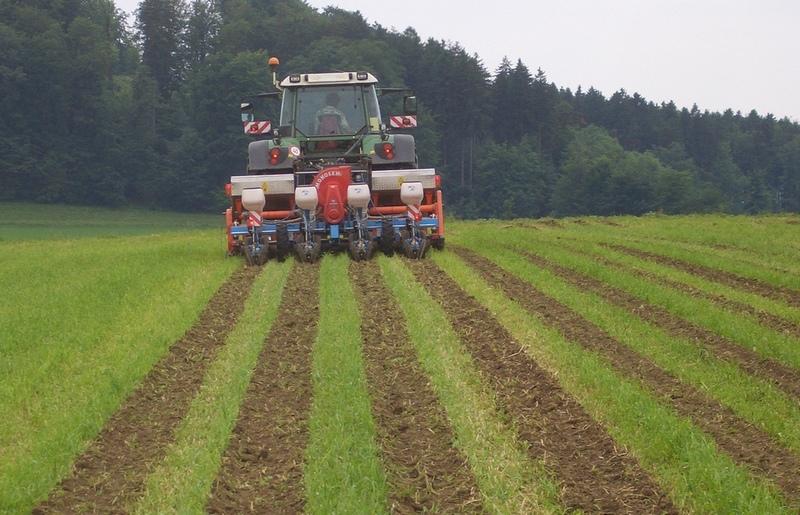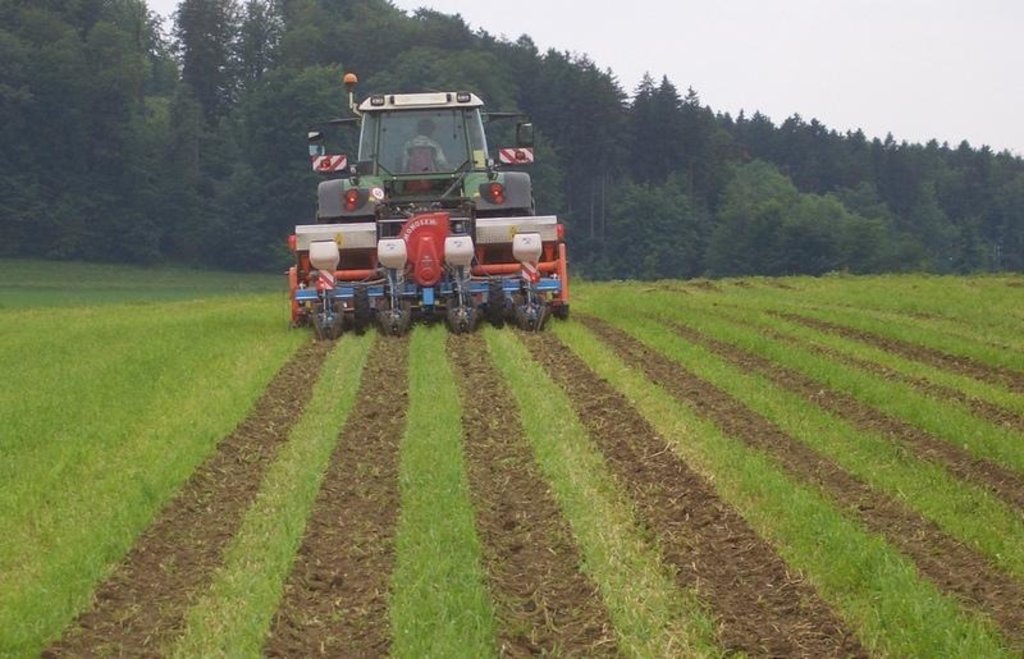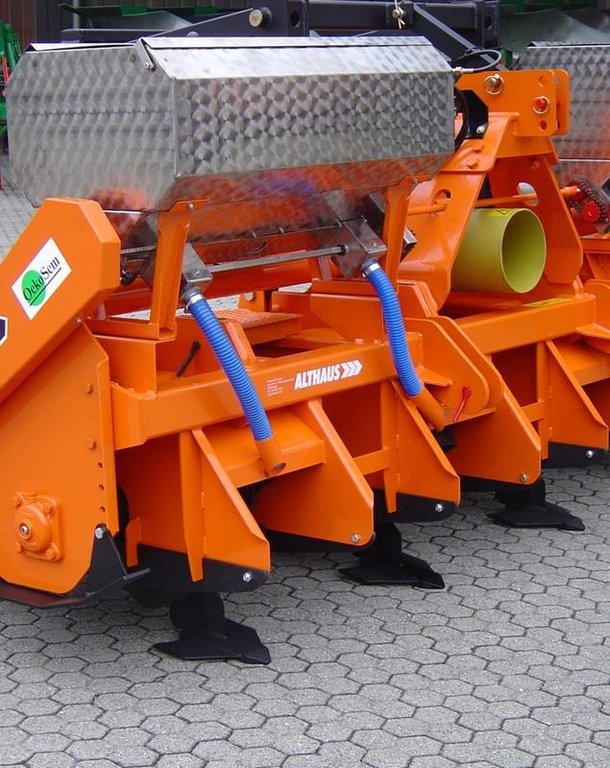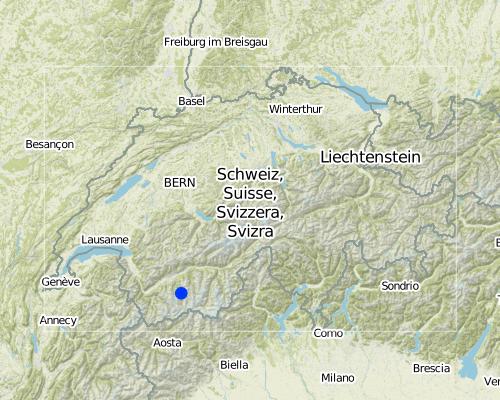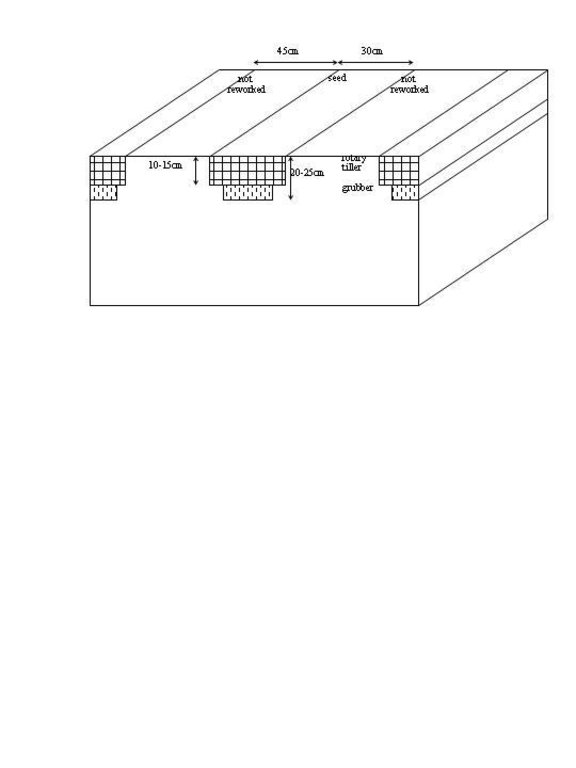Maize strip tillage [สวิตเซอร์แลนด์]
- ผู้สร้างสรรค์:
- การอัพเดท:
- ผู้รวบรวม: Unknown User
- ผู้เรียบเรียง: –
- ผู้ตรวจสอบ: Fabian Ottiger
Streifenfrässaat (German)
technologies_1006 - สวิตเซอร์แลนด์
ดูส่วนย่อย
ขยายทั้งหมด ย่อทั้งหมด1. ข้อมูลทั่วไป
1.2 รายละเอียดที่ติดต่อได้ของผู้รวบรวมและองค์กรที่เกี่ยวข้องในการประเมินและการจัดเตรียมทำเอกสารของเทคโนโลยี
วิทยากรหลัก
ผู้เชี่ยวชาญ SLM:
Wyler Roman
romanwyler@students.unibe.ch
Center for Development and Environment, University of Berne
Hallerstrasse 10, 3012 Bern, Switzerland
สวิตเซอร์แลนด์
ผู้ใช้ที่ดิน:
Wyss Beat
031 765 52 33
beat_wyss@hotmail.com
Hauptstr. 22, 4588 Oberramsern, Switzerland
สวิตเซอร์แลนด์
ชื่อขององค์กรซึ่งอำนวยความสะดวกในการทำเอกสารหรือการประเมินเทคโนโลยี (ถ้าเกี่ยวข้อง)
CDE Centre for Development and Environment (CDE Centre for Development and Environment) - สวิตเซอร์แลนด์1.3 เงื่อนไขการใช้ข้อมูลที่ได้บันทึกผ่านทาง WOCAT
วันที่เก็บรวบรวมข้อมูล(ภาคสนาม) :
09/10/2008
ผู้รวบรวมและวิทยากรหลักยอมรับเงื่อนไขเกี่ยวกับการใช้ข้อมูลที่ถูกบันทึกผ่านทาง WOCAT:
ใช่
1.5 อ้างอิงไปที่แบบสอบถามเรื่องแนวทาง SLM
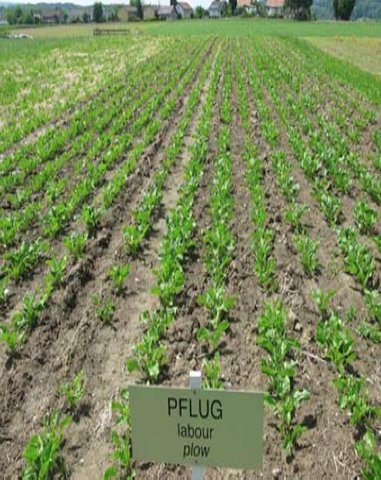
Soil support program for conservation agriculture [สวิตเซอร์แลนด์]
Through the soil support program land users get subsidies for applying conservation technologies on their fields during a period of 6 years.
- ผู้รวบรวม: Deborah Niggli
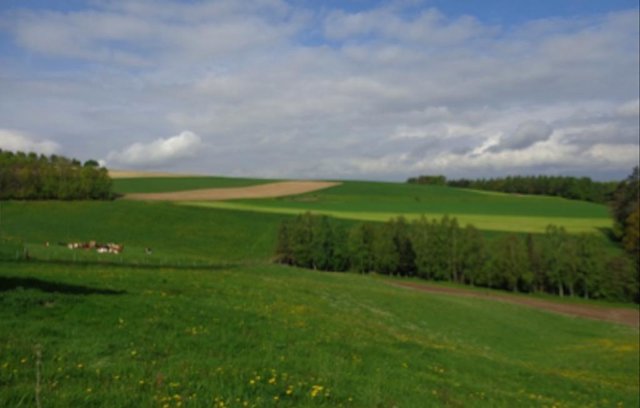
Direktzahlungssystem [สวิตเซอร์แลนด์]
Finanzielle Leistungen des Bundes um den Ertragsverlust, den eine Kultur für den Bauern bringt, auszugleichen. Das Direktzahlungssystem führt gewissermassen zu einer 'Vergünstigung des Produkts' für den Konsumenten.
- ผู้รวบรวม: Deborah Niggli
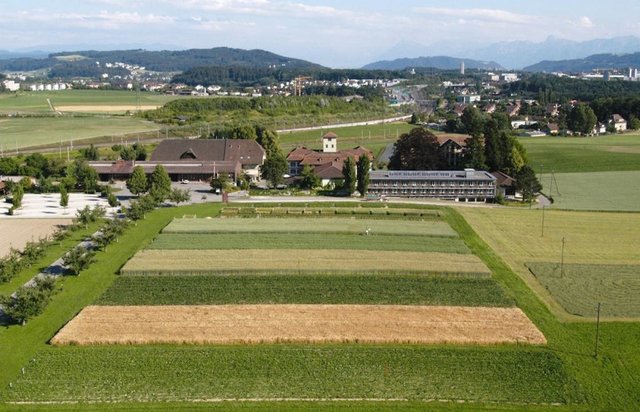
Förderprogramm Boden [สวิตเซอร์แลนด์]
Mit dem Förderprogramm Boden des Kantons Bern erhalten beteiligte Landnutzer Direktzahlungen für die Anwendung von bodenkonservierenden Anbauverfahren auf ihren landwirtschaftlichen Feldern. Das Projekt hat eine Dauer von 6 Jahren.
- ผู้รวบรวม: Deborah Niggli
2. การอธิบายลักษณะของเทคโนโลยี SLM
2.1 การอธิบายแบบสั้น ๆ ของเทคโนโลยี
คำจำกัดความของเทคโนโลยี:
A cropping system for maize which reduces the reworking of the soil to the stripes, in which the seeds are planted.
2.2 การอธิบายแบบละเอียดของเทคโนโลยี
คำอธิบาย:
Maize strip tillage is a mixture between no tillage and conventional agriculture. The reworking of the soil greatly reduced. Instead of ploughing and harrowing a special rotary tiller including a grubber is being used. The working depht of the rotary tiller is 10-15cm, the grubber reaches to 20-25cm depht. The machine reworks the soil on stripes of 30cm width. This is where the seeds are planted. In between there are stripes of 45cm width, which are left untouched.
In Switzerland farms usually are small. A major part of the arable land is used to produce fodder. (For example maize, grain, fodder beet)
Usually maize strip tillage is being used to avoid soil erosion or for economical reasons. Compared to conventional agriculture several working steps can be saved. The reworking of the soil, manuring, seeding and applying of herbicides can be done at once.
Since the machine is expensive and a strong tractor is needed, farmers usually don’t buy it on their own. In most cases a contractor will be tasked to do this work. Of course this is not for free. But since several working step are saved, there is more time left to do other work (6.5h/ha).
The reduced reworking of the soil holds remarkable ecological advantages. Occurrence of erosion is very seldom, because the stripes covered by plant residual significantly reduce the speed of surface water. To increase this effect, the stripes are laid along the height countours, if possible. Since the soil structure is not disturbed in the stripes between the seeds, the risk of compaction is reduced there. For that reason maize strip tillage is often used before potatoes in a crop rotation. This is a crop that is very sensitive to soil compaction.
The technique brings along an ecological disadvantage, too. Before sowings the precedent crop needs to be treated with a total herbicide (glyphosat) to avoid unwanted competition. Only in wet areas, where there is enough water available it is possible to not use glyphosat. Also in long time studies, residues of glyphosat could not be detected in the soil. But if ever weeds will develop a resitance against it, that would certainly be a major problem.
The enhanced risk of crop loss is another disadvantage of the technology. In conventional agriculture the soil is left to dry for a few days after ploughing. maize strip tillage does not hold that possibility. If the conditions are wet, risk of crop failure can be a problem. However, if conditions are good (dry enough), both quality and crop yield are similar to conventional agriculture.
2.3 รูปภาพของเทคโนโลยี
2.5 ประเทศภูมิภาค หรือสถานที่ตั้งที่เทคโนโลยีได้นำไปใช้และได้รับการครอบคลุมโดยการประเมินนี้
ประเทศ:
สวิตเซอร์แลนด์
ภูมิภาค/รัฐ/จังหวัด:
Kanton Solothurn
ข้อมูลจำเพาะเพิ่มเติมของสถานที่ตั้ง :
Oberramsern
แสดงความคิดเห็น:
The portraited farmer is working as a contractor and is applying the technology on about 0.8km2. Currently only 1ha of his own land is used for maize.
Map
×2.6 วันที่การดำเนินการ
ถ้าไม่รู้ปีที่แน่นอน ให้ระบุวันที่โดยประมาณ:
- 10-50 ปี
2.7 คำแนะนำของเทคโนโลยี
ให้ระบุว่าเทคโนโลยีถูกแนะนำเข้ามาอย่างไร:
- ด้วยการริเริ่มของผู้ใช้ที่ดินเอง
ความคิดเห็น (ประเภทของโครงการ เป็นต้น) :
The technology was developed some 12years ago by the designer and contractor Walter Witzig supported by researchers from Forschungsanstalt Reckenholz-Tänikon.
3. การจัดประเภทของเทคโนโลยี SLM
3.1 วัตถุประสงค์หลักของเทคโนโลยี
- ลด ป้องกัน ฟื้นฟู การเสื่อมโทรมของที่ดิน
3.2 ประเภทของการใช้ที่ดินในปัจจุบันที่ได้นำเทคโนโลยีไปใช้

พื้นที่ปลูกพืช
- การปลูกพืชล้มลุกอายุปีเดียว
พืชหลัก (พืชเศรษฐกิจและพืชอาหาร):
Major cash crop annual cropping: maize (fodder for pigs)
Major cash crop perennial (non-woody) cropping: hay (fodder for horses)
แสดงความคิดเห็น:
Major land use problems (land users’ perception): Soil erosion by water and soil compaction.
3.3 ข้อมูลเพิ่มเติมเกี่ยวกับการใช้ที่ดิน
การใช้น้ำของที่ดินที่มีการใช้เทคโนโลยีอยู่:
- จากน้ำฝน
จำนวนของฤดูเพาะปลูกต่อปี:
- 1
ระบุ:
Longest growing period in days: 240Longest growing period from month to month: Mar - Oct
3.4 กลุ่ม SLM ที่ตรงกับเทคโนโลยีนี้
- มาตรการปลูกพืชขวางความลาดชัน (cross-slope measure)
3.5 กระจายตัวของเทคโนโลยี
แสดงความคิดเห็น:
Total area covered by the SLM Technology is 0.8 m2.
The portraited farmer is working as a contractor and is applying the technology on about 0.8km2. Currently only 1ha of his own land is used for maize.
3.6 มาตรการ SLM ที่ประกอบกันเป็นเทคโนโลยี

มาตรการจัดการพืช
- A1: พืช/สิ่งปกคลุมดิน
แสดงความคิดเห็น:
Main measures: agronomic measures
Type of agronomic measures: contour planting / strip cropping, minimum tillage
3.7 รูปแบบหลักของการเสื่อมโทรมของที่ดินที่ได้รับการแก้ไขโดยเทคโนโลยี

การกัดกร่อนของดินโดยน้ำ
- Wt (Loss of topsoil): การสูญเสียดินชั้นบนหรือการกัดกร่อนที่ผิวดิน

การเสื่อมโทรมของดินทางด้านกายภาพ
- Pc (Compaction): การอัดแน่น

การเสื่อมโทรมของดินทางด้านชีวภาพ
- Bc (Reduction of vegetation cover): การลดลงของจำนวนพืชที่ปกคลุมดิน
- Bl (Loss of soil life): การสูญเสียสิ่งมีชีวิตในดิน
แสดงความคิดเห็น:
Main type of degradation addressed: Wt: loss of topsoil / surface erosion, Pc: compaction, Bc: reduction of vegetation cover
Secondary types of degradation addressed: Bl: loss of soil life
Main causes of degradation: crop management (annual, perennial, tree/shrub) (too deep and too intensive reworking of the soil.), Heavy / extreme rainfall (intensity/amounts), education, access to knowledge and support services (Tradition. Most people do not question tillage.), crop management (annual, perennial, tree / shrub) (too heavy machinery used under wet conditions.)
3.8 การป้องกัน การลดลง หรือการฟื้นฟูความเสื่อมโทรมของที่ดิน
ระบุเป้าหมายของเทคโนโลยีกับความเสื่อมโทรมของที่ดิน:
- ป้องกันความเสื่อมโทรมของที่ดิน
- ลดความเสื่อมโทรมของดิน
แสดงความคิดเห็น:
Main goals: prevention of land degradation
Secondary goals: mitigation / reduction of land degradation
4. ข้อมูลจำเพาะด้านเทคนิค กิจกรรมการนำไปปฏิบัติใช้ ปัจจัยนำเข้า และค่าใช้จ่าย
4.1 แบบแปลนทางเทคนิคของเทคโนโลยี
4.2 ข้อมูลจำเพาะด้านเทคนิคและการอธิบายแบบแปลนทางเทคนิค
The rotary tillers working depth is 10-15cm. The grubber reaches to 20-25cm depth. This is to obtain a loose soil structure. Manure is brought into the soil while tilling.
Immediately after that the seeds are brought into the soil. Finally a selective herbicide can be sprayed. Stripes of 45cm width are not reworked and help to avoid soil erosion and compaction.
Technical knowledge required for field staff / advisors: moderate
Technical knowledge required for land users: moderate
Main technical functions: improvement of ground cover, improvement of topsoil structure (compaction)
Secondary technical functions: control of raindrop splash, improvement of surface structure (crusting, sealing), increase of infiltration, increase / maintain water stored in soil
Contour planting / strip cropping
Material/ species: Maize
Minimum tillage
Remarks: The stripes are laid along the contours
4.3 ข้อมูลทั่วไปเกี่ยวกับการคำนวณปัจจัยนำเข้าและค่าใช้จ่าย
อื่นๆ หรือสกุลเงินประจำชาติ (ระบุ):
Swiss Franc
ระบุอัตราแลกเปลี่ยนจากดอลลาร์สหรัฐเป็นสกุลเงินท้องถิ่น (ถ้าเกี่ยวข้อง) คือ 1 เหรียญสหรัฐ =:
1.13
4.4 กิจกรรมเพื่อการจัดตั้ง
| กิจกรรม | ประเภทของมาตรการ | ช่วงเวลาดำเนินการ | |
|---|---|---|---|
| 1. | Buy a "Streifenfräse" | จัดการพืช | |
| 2. | Buy a tractor | จัดการพืช |
4.5 ค่าใช้จ่ายของปัจจัยนำเข้าที่จำเป็นสำหรับการจัดตั้ง
| ปัจจัยนำเข้า | หน่วย | ปริมาณ | ค่าใช้จ่ายต่อหน่วย | ค่าใช้จ่ายทั้งหมดต่อปัจจัยนำเข้า | %ของค่าใช้จ่ายที่ก่อให้เกิดขึ้นโดยผู้ใช้ที่ดิน | |
|---|---|---|---|---|---|---|
| อุปกรณ์ | Streifenfräse | Machine | 1.0 | 42000.0 | 42000.0 | 100.0 |
| อุปกรณ์ | Tractor | Machine | 1.0 | 115000.0 | 115000.0 | 100.0 |
| ค่าใช้จ่ายทั้งหมดของการจัดตั้งเทคโนโลยี | 157000.0 | |||||
แสดงความคิดเห็น:
Duration of establishment phase: 0 month(s)
4.6 การบำรุงรักษาสภาพหรือกิจกรรมที่เกิดขึ้นเป็นประจำ
| กิจกรรม | ประเภทของมาตรการ | ช่วงระยะเวลา/ความถี่ | |
|---|---|---|---|
| 1. | application of glyphosat (total herbicide) | จัดการพืช | 1 per growing period |
| 2. | tillage of stripes including seeding, manuring, spraying of herbicide | จัดการพืช | 1 per growing period |
4.7 ค่าใช้จ่ายของปัจจัยนำเข้าและกิจกรรมที่เกิดขึ้นเป็นประจำที่ต้องการการบำรุงรักษา (ต่อปี)
| ปัจจัยนำเข้า | หน่วย | ปริมาณ | ค่าใช้จ่ายต่อหน่วย | ค่าใช้จ่ายทั้งหมดต่อปัจจัยนำเข้า | %ของค่าใช้จ่ายที่ก่อให้เกิดขึ้นโดยผู้ใช้ที่ดิน | |
|---|---|---|---|---|---|---|
| แรงงาน | tillage of stripes, seeding, | ha | 1.0 | 393.0 | 393.0 | 100.0 |
| แรงงาน | appliance of total herbicide | ha | 1.0 | 88.0 | 88.0 | 100.0 |
| ปุ๋ยและสารฆ่า/ยับยั้งการเจริญเติบโตของสิ่งมีชีวิต (ไบโอไซด์) | Biocides | ha | 1.0 | 53.0 | 53.0 | 100.0 |
| ค่าใช้จ่ายทั้งหมดของการบำรุงรักษาสภาพเทคโนโลยี | 534.0 | |||||
แสดงความคิดเห็น:
Crop yield is about the same as in conventional cropping systems. The cost to apply the technology are about $410 per ha. It takes about 2 working hours per ha. In addition the glyphosat needs to be applied, which accounts for $150 or 0.75h of work. The following worksteps are not needed anymore (working hours, costs when tasking a contractor excl. material): Ploughing (1.25h, $260), harrowing (1.25h, $180), conventional seeding (1h, $100), manuring (1h, $50), applying of herbicides (0.75h, $90). In total about $130 and 4 hours of work can be saved per ha. In some cantons Streifenfrässaat is also subsidised. In the canton of bern this accounts for $420 per ha and year for the first 5 years of appliance. The costs for manure, herbicides, seeds are not included since they are the same as in conventional agriculture.
4.8 ปัจจัยสำคัญที่สุดที่มีผลกระทบต่อค่าใช้จ่าย
ปัจจัยสำคัญที่สุดที่มีผลกระทบต่อค่าใช้จ่ายต่างๆ:
The machine is very expensive. In addition a strong tractor is needed (ca. 150hp). Thats why most farmer task a contractor with the seeding. In this case no initial investment needs to be done. The machine in this case study is used for about 60ha per year. A bigger workload would be possible.
5. สิ่งแวดล้อมทางธรรมชาติและของมนุษย์
5.1 ภูมิอากาศ
ฝนประจำปี
- < 250 ม.ม.
- 251-500 ม.ม.
- 501-750 ม.ม.
- 751-1,000 ม.ม.
- 1,001-1,500 ม.ม.
- 1,501-2,000 ม.ม.
- 2,001-3,000 ม.ม.
- 3,001-4,000 ม.ม.
- > 4,000 ม.ม.
เขตภูมิอากาศเกษตร
- กึ่งชุ่มชื้น
Thermal climate class: temperate
5.2 สภาพภูมิประเทศ
ค่าเฉลี่ยความลาดชัน:
- ราบเรียบ (0-2%)
- ลาดที่ไม่ชัน (3-5%)
- ปานกลาง (6-10%)
- เป็นลูกคลื่น (11-15%)
- เป็นเนิน (16-30%)
- ชัน (31-60%)
- ชันมาก (>60%)
ธรณีสัณฐาน:
- ที่ราบสูง/ที่ราบ
- สันเขา
- ไหล่เขา
- ไหล่เนินเขา
- ตีนเนิน
- หุบเขา
ระดับความสูง:
- 0-100 เมตร
- 101-500 เมตร
- 501-1,000 เมตร
- 1,001-1,500 เมตร
- 1,501-2,000 เมตร
- 2,001-2,500 เมตร
- 2,501-3,000 เมตร
- 3,001-4,000 เมตร
- > 4,000 เมตร
5.3 ดิน
ค่าเฉลี่ยความลึกของดิน:
- ตื้นมาก (0-20 ซ.ม.)
- ตื้น (21-50 ซ.ม.)
- ลึกปานกลาง (51-80 ซ.ม.)
- ลึก (81-120 ซ.ม.)
- ลึกมาก (>120 ซ.ม.)
เนื้อดิน (ดินชั้นบน):
- ปานกลาง (ดินร่วน ทรายแป้ง)
- ละเอียด/หนัก (ดินเหนียว)
อินทรียวัตถุในดิน:
- สูง (>3%)
(ถ้ามี) ให้แนบคำอธิบายเรื่องดินแบบเต็มหรือระบุข้อมูลที่มีอยู่ เช่น ชนิดของดิน ค่า pH ของดินหรือความเป็นกรดของดิน ความสามารถในการแลกเปลี่ยนประจุบวก ไนโตรเจน ความเค็ม เป็นต้น:
Soil fertility is high
Soil drainage/infiltration is good
Soil water storage capacity is high
5.4 ความเป็นประโยชน์และคุณภาพของน้ำ
ระดับน้ำใต้ดิน:
5-50 เมตร
คุณภาพน้ำ (ที่ยังไม่ได้บำบัด):
เป็นน้ำเพื่อการดื่มที่ดี
ความคิดเห็นและข้อมูลจำเพาะเพิ่มเติมเรื่องคุณภาพและปริมาณน้ำ:
Availability of surface water: good, medium ( precipitation maximum in summer )
5.5 ความหลากหลายทางชีวภาพ
ความหลากหลายทางชนิดพันธุ์:
- ปานกลาง
5.6 ลักษณะของผู้ใช้ที่ดินที่นำเทคโนโลยีไปปฏิบัติใช้
แนวทางการตลาดของระบบการผลิต:
- ทำการค้า/การตลาด
รายได้ที่มาจากนอกฟาร์ม:
- > 50% ของรายได้ทั้งหมด
ระดับของความมั่งคั่งโดยเปรียบเทียบ:
- พอมีพอกิน
เป็นรายบุคคล/ครัวเรือน:
- เป็นรายบุคคล/ครัวเรือน
ระดับของการใช้เครื่องจักรกล:
- การใช้เครื่องจักรหรือเครื่องยนต์
ระบุลักษณะอื่นๆที่เกี่ยวข้องของผู้ใช้ที่ดิน:
Difference in the involvement of women and men: Ist mostly men that get in touch with the technology since it is mostly them who are using the machines. But decisions about which technology should be used are taken at the household level including both women and men.
Population density: 50-100 persons/km2
Annual population growth: 0.5% - 1%
Off-farm income specification: The farmer interviewed is working for other farmers, too. In general off-farm income is significantly lower.
5.7 พื้นที่เฉลี่ยของที่ดินที่เป็นเจ้าของหรือเช่าโดยผู้ใช้ที่ดินที่นำเทคโนโลยีไปปฏิบัติใช้
- < 0.5 เฮกตาร์
- 0.5-1 เฮกตาร์
- 1-2 เฮกตาร์
- 2-5 เฮกตาร์
- 5-15 เฮกตาร์
- 15-50 เฮกตาร์
- 50-100 เฮกตาร์
- 100-500 เฮกตาร์
- 500-1,000 เฮกตาร์
- 1,000-10,000 เฮกตาร์
- >10,000 เฮกตาร์
แสดงความคิดเห็น:
The farmer portraited owns not more than 10ha, he is working for others as a contractor
5.8 กรรมสิทธิ์ในที่ดิน สิทธิในการใช้ที่ดินและสิทธิในการใช้น้ำ
กรรมสิทธิ์ในที่ดิน:
- รายบุคคล ได้รับสิทธิครอบครอง
สิทธิในการใช้ที่ดิน:
- รายบุคคล
สิทธิในการใช้น้ำ:
- เกี่ยวกับชุมชน (ถูกจัดระเบียบ)
5.9 การเข้าถึงบริการและโครงสร้างพื้นฐาน
สุขภาพ:
- จน
- ปานกลาง
- ดี
การศึกษา:
- จน
- ปานกลาง
- ดี
ความช่วยเหลือทางด้านเทคนิค:
- จน
- ปานกลาง
- ดี
การจ้างงาน (เช่น ภายนอกฟาร์ม):
- จน
- ปานกลาง
- ดี
ตลาด:
- จน
- ปานกลาง
- ดี
พลังงาน:
- จน
- ปานกลาง
- ดี
ถนนและการขนส่ง:
- จน
- ปานกลาง
- ดี
น้ำดื่มและการสุขาภิบาล:
- จน
- ปานกลาง
- ดี
บริการด้านการเงิน:
- จน
- ปานกลาง
- ดี
6. ผลกระทบและสรุปคำบอกกล่าว
6.1 ผลกระทบในพื้นที่ดำเนินการ (On-site) จากการใช้เทคโนโลยี
ผลกระทบทางด้านเศรษฐกิจและสังคม
การผลิต
การผลิตพืชผล
แสดงความคิดเห็น/ระบุ:
steeper hills can be cultivated since the risk for erosion is reduced
คุณภาพพืชที่ใช้เลี้ยงปศุสัตว์
การเสี่ยงต่อความล้มเหลวในการผลิต
แสดงความคิดเห็น/ระบุ:
droughts: less water scarcity, intense rain: less erosion but the weather needs to be dryer in spring, since the soil cannot be left to dry between ploughing and seeding
พื้นที่สำหรับการผลิต
รายได้และค่าใช้จ่าย
ค่าใช่จ่ายของปัจจัยการผลิตทางการเกษตร
แสดงความคิดเห็น/ระบุ:
Less worksteps need to be done, income remains the same. But a total herbicide and sometimes a little more manure is needed
ความหลากหลายของแหล่งผลิตรายได้
แสดงความคิดเห็น/ระบุ:
Since the work is usually outsourced to a contractor, the farmer can use his time for other activities
ภาระงาน
แสดงความคิดเห็น/ระบุ:
less worksteps need to be done
ผลกระทบด้านสังคมวัฒนธรรมอื่น ๆ
โอกาสทางวัฒนธรรม
แสดงความคิดเห็น/ระบุ:
Reduced independence if contractors are tasked
ผลกระทบด้านนิเวศวิทยา
ดิน
สิ่งปกคลุมดิน
การสูญเสียดิน
การเกิดแผ่นแข็งที่ผิวดิน /การเกิดชั้นดาน
การอัดแน่นของดิน
ความหลากหลายทางชีวภาพของพืชและสัตว์
ชนิดพันธุ์ที่ให้ประโยชน์
แสดงความคิดเห็น/ระบุ:
more earthworms
6.2 ผลกระทบนอกพื้นที่ดำเนินการ (Off-site) จากการใช้เทคโนโลยี
ความเสียหายต่อพื้นที่เพาะปลูกของเพื่อนบ้าน
ความเสียหายต่อโครงสร้างพื้นฐานของรัฐหรือของเอกชน
6.3 การเผชิญและความตอบสนองของเทคโนโลยีต่อการเปลี่ยนแปลงสภาพภูมิอากาศที่ค่อยเป็นค่อยไป และสภาพรุนแรงของภูมิอากาศ / ภัยพิบัติ (ที่รับรู้ได้โดยผู้ใช้ที่ดิน)
การเปลี่ยนแปลงสภาพภูมิอากาศที่ค่อยเป็นค่อยไป
การเปลี่ยนแปลงสภาพภูมิอากาศที่ค่อยเป็นค่อยไป
| ฤดู | ประเภทของการเปลี่ยนแปลงสภาพภูมิอากาศที่ค่อยเป็นค่อยไป และสภาพรุนแรงของภูมิอากาศ | เทคโนโลยีมีวิธีการรับมืออย่างไร | |
|---|---|---|---|
| อุณหภูมิประจำปี | เพิ่มขึ้น | ไม่ทราบ |
สภาพรุนแรงของภูมิอากาศ (ภัยพิบัติ)
ภัยพิบัติทางอุตุนิยมวิทยา
| เทคโนโลยีมีวิธีการรับมืออย่างไร | |
|---|---|
| พายุฝนประจำท้องถิ่น | ดี |
| พายุลมประจำท้องถิ่น | ไม่ทราบ |
ภัยพิบัติจากสภาพภูมิอากาศ
| เทคโนโลยีมีวิธีการรับมืออย่างไร | |
|---|---|
| ภัยจากฝนแล้ง | ดี |
ภัยพิบัติจากน้ำ
| เทคโนโลยีมีวิธีการรับมืออย่างไร | |
|---|---|
| น้ำท่วมตามปกติ (แม่น้ำ) | ไม่ทราบ |
ผลลัพธ์ตามมาที่เกี่ยวข้องกับภูมิอากาศอื่น ๆ
ผลลัพธ์ตามมาที่เกี่ยวข้องกับภูมิอากาศอื่น ๆ
| เทคโนโลยีมีวิธีการรับมืออย่างไร | |
|---|---|
| ช่วงการปลูกพืชที่ลดลงมา | ไม่ค่อยดี |
6.4 การวิเคราะห์ค่าใช้จ่ายและผลประโยชน์ที่ได้รับ
ผลประโยชน์ที่ได้รับเปรียบเทียบกับค่าใช้จ่ายในการจัดตั้งเป็นอย่างไร (จากมุมมองของผู้ใช้ที่ดิน)
ผลตอบแทนระยะสั้น:
ด้านลบ
ผลตอบแทนระยะยาว:
ด้านบวก
ผลประโยชน์ที่ได้รับเปรียบเทียบกับค่าใช้จ่ายในการบำรุงรักษาหรือต้นทุนที่เกิดขึ้นซ้ำอีก เป็นอย่างไร (จากมุมมองของผู้ใช้ที่ดิน)
ผลตอบแทนระยะสั้น:
ด้านบวก
ผลตอบแทนระยะยาว:
ด้านบวก
แสดงความคิดเห็น:
The farmer portaited bought a machine on his own. If a contractor were tasked short-returns would be positive too.
6.5 การปรับตัวของเทคโนโลยี
จากทั้งหมดที่ได้รับเทคโนโลยีเข้ามามีจำนวนเท่าใดที่ทำแบบทันที โดยไม่ได้รับการจูงใจด้านวัสดุหรือการเงินใด ๆ:
- 10-50%
แสดงความคิดเห็น:
80% of land user families have adopted the Technology with external material support
Comments on acceptance with external material support: There is the possibility to get subsidies. But resources are limited and therefore not everybody gets them. (See Approach)
20% of land user families have adopted the Technology without any external material support
There is a moderate trend towards spontaneous adoption of the Technology
Comments on adoption trend: The technology is not spreading homogenously. Adoption and acceptance varies very much in different regions. Pioneers play an important role.
6.7 จุดแข็ง / ข้อได้เปรียบ / โอกาสของเทคโนโลยี
| จุดแข็ง / ข้อได้เปรียบ / โอกาสในทัศนคติของผู้ใช้ที่ดิน |
|---|
|
The number of worksteps is greatly reduced. Thats why money and time can be saved. How can they be sustained / enhanced? Since less work needs to be done, the farmer can concentrate on other activities to enhance income. |
|
Soil structure is improved. Risk of compaction is reduced. How can they be sustained / enhanced? Still heavy machinery should not be used under wet conditions. |
|
Soil erosion is reduced very much. How can they be sustained / enhanced? The technology applies for maize only. Other conservation techniques should be used for other crops. |
| จุดแข็ง / ข้อได้เปรียบ / โอกาสในทัศนคติของผู้รวบรวมหรือวิทยากรหลัก |
|---|
|
Steeper hills can be cultivated without risking erosion. How can they be sustained / enhanced? the stripes should in general be laid along the contours. |
6.8 จุดอ่อน / ข้อเสียเปรียบ / ความเสี่ยงของเทคโนโลยีและวิธีการแก้ไข
| จุดอ่อน / ข้อเสียเปรียบ / ความเสี่ยงในทัศนคติของผู้ใช้ที่ดิน | มีวิธีการแก้ไขได้อย่างไร |
|---|---|
| Risk of crop failure is enhanced if seeding under too wet conditions. | The time of seeding is critical and should be chosen carefully. If conditions are too wet, ploughing might be a better choice. |
| The machine is very expensive. Single farmers usually cannot afford it. | Cost can be shared with other parties or a contractor can be tasked. |
| In general a total herbicide must be applied before sowing. | The amount of glyphosat should be adapted to the number of weeds. |
| จุดอ่อน / ข้อเสียเปรียบ / ความเสี่ยงในทัศนคติของผู้รวบรวมหรือวิทยากรหลัก | มีวิธีการแก้ไขได้อย่างไร |
|---|---|
| Reworking of the soil is still intense. | |
| A powerful tractor is needed. Fuel consumption is still high. |
7. การอ้างอิงและการเชื่อมต่อ
7.2 การอ้างอิงถึงสิ่งตีพิมพ์
หัวข้อ, ผู้เขียน, ปี, หมายเลข ISBN:
report on DVD: von Bauern für Bauern
ชื่อเรื่อง ผู้เขียน ปี ISBN:
www.vonbauernfuerbauern.ch CHF 20.-
ลิงก์และโมดูล
ขยายทั้งหมด ย่อทั้งหมดลิงก์

Soil support program for conservation agriculture [สวิตเซอร์แลนด์]
Through the soil support program land users get subsidies for applying conservation technologies on their fields during a period of 6 years.
- ผู้รวบรวม: Deborah Niggli

Direktzahlungssystem [สวิตเซอร์แลนด์]
Finanzielle Leistungen des Bundes um den Ertragsverlust, den eine Kultur für den Bauern bringt, auszugleichen. Das Direktzahlungssystem führt gewissermassen zu einer 'Vergünstigung des Produkts' für den Konsumenten.
- ผู้รวบรวม: Deborah Niggli

Förderprogramm Boden [สวิตเซอร์แลนด์]
Mit dem Förderprogramm Boden des Kantons Bern erhalten beteiligte Landnutzer Direktzahlungen für die Anwendung von bodenkonservierenden Anbauverfahren auf ihren landwirtschaftlichen Feldern. Das Projekt hat eine Dauer von 6 Jahren.
- ผู้รวบรวม: Deborah Niggli
โมดูล
ไม่มีโมดูล


